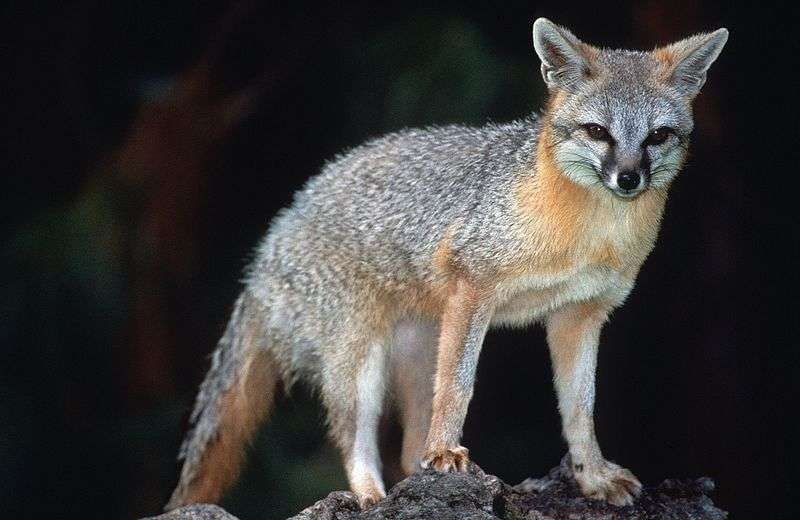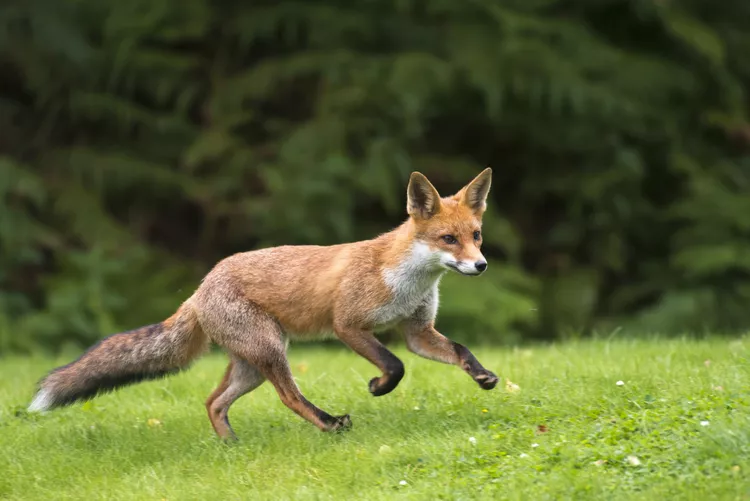
Description
Scientific Name: Urocyon cinereoargenteus
Lifespan: 14–15 years in captivity and up to 6 years in the wild
Medium-sized grey foxes have large bodies and rather small legs. Males are slightly larger and more robust than females, and they have longer pelvises than do people who live at low elevations. People who live at high elevations are slightly larger than people who live at low elevations. Grey foxes have dark brown fur at birth. Their adult fur is a blend of red, white, grey, and black. The top of their head, back, and sides are grey, and their tail is roughly one-third the length of their body. It has a noticeable black stripe on top and a black tip; the rest of it is grey. Its nose, cheeks, and throat are white, while its chest, belly, sides of the face, and legs are reddish brown. Oval-shaped pupils can be seen. A thin black band that extends from the eye’s outer corner surrounds the eyes. From the inner corner of the eye to the lips, a thicker black stripe can be seen.
Behavior
The majority of the year, grey foxes live alone. In the period following the birth of the kits, they will interact socially with their mate and their young. Although they are primarily nocturnal, they have occasionally been seen during the day. They build their dens in trees, hollow logs, rocky nooks, and caves. For their den, grey foxes will occasionally enlarge a woodchuck burrow. They for mating and for raising offspring typically only use dens. These foxes have the same communication methods as other Canidae family members, including barking and growling. Commonly, young foxes will play fight. Adults use their scent to designate food sources and territorial boundaries.
Distribution
A large portion of North America, Central America, and even South America are home to grey foxes. They are found all over North America, with the exception of the far north. They are found throughout most of Central America, but only the far northernmost parts of South America.
As Pet

Care
This fox requires care in a zoo that is relatively comparable to that of closely related species. With the exception of diet, they all have quite similar demands. Zookeepers must provide them a lot of room to move around and a selection of hiding spots. They must also provide the foxes with puzzles, toys, fresh scents, and other psychologically challenging activities.
This kind of fox needs more greenery in its diet than other foxes do. In addition to rats, rabbits, and other proteins, keepers also give the foxes a range of fruits and vegetables.
Feeding
Maintaining the happiness and health of your pet grey fox requires feeding it a balanced diet. It’s not possible to simply go to the shop and buy a bag of kibble for a pet grey fox, therefore it’s important to ensure that their diet is proper to maintain them as healthy as possible.
Being omnivores, grey foxes do benefit from include certain fruits and vegetables in their diet, but their primary food should be raw meat. In the wild, grey foxes are a little more omnivorous than the other foxes for whom we have published care recommendations, but meat still makes up the majority of their diet. Whole prey is a fantastic method to provide everything your pet grey fox needs without having to measure, but depending on where you live, it’s not always the most convenient to locate. Having a balanced diet for your pet grey fox is crucial when you can’t obtain complete prey. Despite its intimidating appearance, this chore is actually quite simple once you get the feel of it.
Your pet grey fox’s raw food diet ought to have the following to be nutritionally balanced: The remainder should be made up of fruits and vegetables that are suitable for pets, along with 65-70% muscle meat, 10% raw bones that are tiny enough for them to chew through (non-weight bearing bones are better to prevent them from breaking a tooth), 5% offal like kidney, spleen, brain, etc., and 5% liver.
Table





